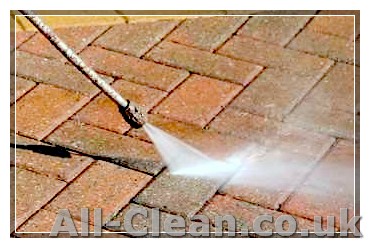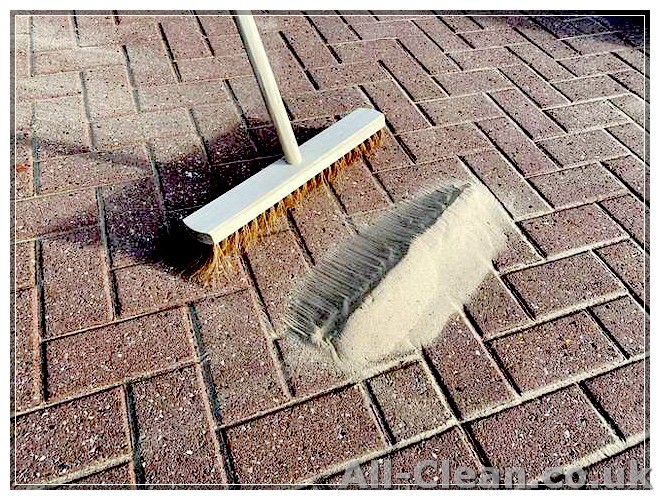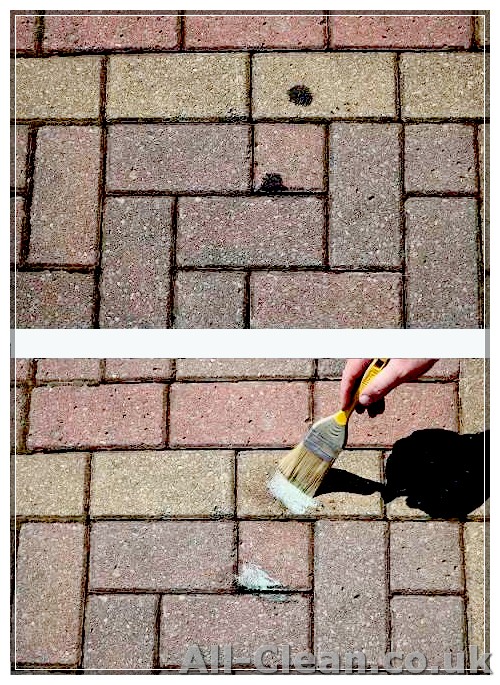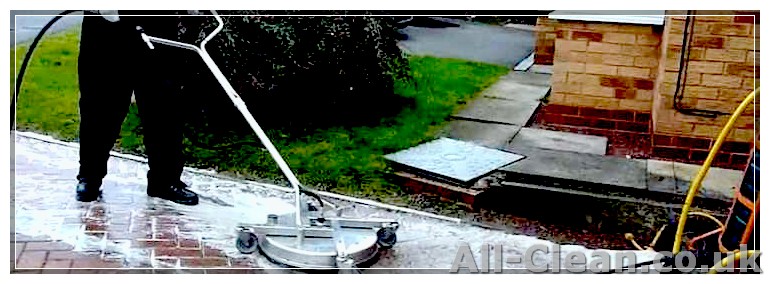
Block paving is a popular choice for driveways, patios, and walkways due to its durability and attractive appearance. However, over time, block paving can accumulate dirt, grime, grease, and even weeds, making it essential to clean and maintain regularly. While many people resort to using pressure washers to clean block paving, some may not have access to this equipment or prefer not to use them due to potential damage. Fortunately, there are several easy and effective methods to clean block paving without a pressure washer.
One of the most straightforward ways to clean block paving is by scrubbing the surface with a solution of warm water and detergent. This method helps to remove dirt and grease, making the paving look fresh and clean. You can either use a sponge or a stiff brush to scrub the paving thoroughly. Additionally, you can make your own natural cleaning solution by mixing vinegar or lemon juice with warm water. These natural ingredients are suitable for removing stains and preventing weed growth.
If you have stubborn stains or oil marks on your block paving, you can try using baking soda or bleach. Both of these products can be effective in removing tough stains, but they should be used with caution and should not be mixed. When using bleach, make sure to dilute it properly and rinse the area thoroughly. Baking soda, on the other hand, can be sprinkled directly on the stains and scrubbed with a brush. After scrubbing, rinse the area with warm water to remove any residue.
Another effective cleaner for block paving is a mixture of warm water and dish soap. This cleaner contains ingredients that can break down grease and grime, leaving your paving looking clean and fresh. To use this cleaner, mix a few drops of dish soap with warm water in a bucket. Then, dip a scrub brush into the soapy water and scrub the block paving in a circular motion. Rinse the paving with warm water to remove any soap residue.
If you have block paving that is prone to weed growth, prevention is the best way to avoid having to remove them later. You can prevent weeds from growing by regularly sweeping the surface and removing any loose debris. Additionally, you can use a strong weed killer or vinegar. Weed killers should be used according to the manufacturer’s instructions, while vinegar can be applied directly to the weeds to kill them. However, be careful when using vinegar, as it can also kill nearby plants and grass.
In conclusion, cleaning block paving without a pressure washer can be done using various methods and ingredients found in your pantry. Scrubbing with warm water and detergent, using natural cleaners like vinegar or lemon juice, or applying baking soda or bleach can effectively remove dirt, grease, and stains. Regular maintenance, such as sweeping and weed prevention, can help keep your block paving looking its best. So, the next time you find yourself without a pressure washer, don’t fret! You have plenty of alternatives for keeping your block paving clean and well-maintained.
- Easy and Effective Tips for Cleaning Block Paving Without a Pressure Washer
- 1. Sweep and Remove Loose Debris
- 2. Use Specialist Cleaners
- 3. Apply a Detergent Solution
- 4. Scrub the Surface
- 5. Rinse with Water
- 6. Use a Weed Removal Agent
- 7. Prevent Future Stains and Weeds
- 8. Consider Natural Alternatives
- Conclusion
- Remove Debris and Sweep the Area
- Use a Scrubbing Brush and Detergent Solution
- Rinse with Water and Allow to Dry
- Sealing Your Driveway After Cleaning: Protect and Enhance
- Why Should You Seal Your Driveway?
- What Type of Sealant Should You Use?
- How to Apply Sealant
- FAQs: Sealing Your Driveway
- Conclusion
Easy and Effective Tips for Cleaning Block Paving Without a Pressure Washer
Block paving is a popular choice for driveways and patios due to its durability and aesthetically pleasing appearance. However, over time, block paving can accumulate dirt, moss, weeds, and stains, making it look worn and unkempt. While a pressure washer is an effective tool for cleaning block paving, there are alternative methods that can achieve great results without the need for one.
1. Sweep and Remove Loose Debris
Before you start cleaning your block paving, it’s important to remove any loose debris such as leaves, twigs, and dirt. Use a broom or a stiff brush to sweep away the surface debris.
2. Use Specialist Cleaners

If your block paving has particular stains, such as oil or rust, you may need to use specialized cleaners that are designed to target these specific issues. Look for cleaners that are specifically formulated for removing oil or rust stains and follow the instructions for proper usage.
3. Apply a Detergent Solution

For general cleaning, a mixture of water and detergent can be highly effective. Mix around 3-5 tablespoons of mild detergent into a gallon of warm water. Apply the solution to the block paving using a brush or a garden sprayer, making sure to work it into the surface.
4. Scrub the Surface
Once the detergent solution has been applied, use a scrub brush or a stiff broom to scrub the surface of the block paving. Focus on any particularly dirty or stained areas, applying more pressure if necessary. This will help to loosen and remove any ingrained dirt or stains.
5. Rinse with Water
After scrubbing, rinse the block paving thoroughly with clean water. This can be done using a hose or a bucket of water. Make sure to rinse away all traces of the detergent solution, as any residue left behind can cause the block paving to become slippery. Rinse until the water runs clear.
6. Use a Weed Removal Agent
If your block paving has weeds growing between the cracks, you may need to use a weed removal agent. There are various products available in the market specifically designed for removing weeds from block paving. Follow the instructions provided on the product for proper usage.
7. Prevent Future Stains and Weeds
To keep your block paving looking clean and well-maintained in the future, it’s important to take preventive measures. Regularly sweep away any debris, such as leaves or dirt, that may accumulate on the surface. Additionally, consider applying a specialist sealant to the block paving. This can help to protect against stains and prevent weeds from taking root.
8. Consider Natural Alternatives
If you’re looking for environmentally-friendly alternatives to chemical cleaners, you can try using natural ingredients instead. Baking soda and vinegar, for example, can be effective in removing stains and grease from block paving. Create a paste by mixing equal parts baking soda and water, apply it to the stained area, and let it sit for a few minutes. Then, scrub the area with a brush and rinse with water.
Conclusion

While a pressure washer is a convenient tool for cleaning block paving, it’s not always necessary. By following these easy and effective tips, you can achieve great results without the need for one. Sweeping away debris, using specialist cleaners or a detergent solution, scrubbing the surface, rinsing with water, and taking preventive measures will help to keep your block paving looking clean and well-maintained for years to come.
Remove Debris and Sweep the Area
To begin the cleaning process of your block paving, the first step is to remove any debris and sweep the entire area. This will help eliminate loose dirt, leaves, and other particles that may have accumulated on the surface.
You can simply use a broom or a brush to sweep the surface. Make sure to pay close attention to corners, cracks, and hard-to-reach areas. If there are any pots or furniture on the paving, move them out of the way to ensure a thorough cleaning.
If you have stubborn stains or spots on your block paving that you want to treat, you can use a suitable cleaning product. There are many options available in the market, such as block paving cleaners, stain removers, or even homemade mixtures using household agents like vinegar or baking soda.
For handling tough stains or heavily soiled areas, a professional-grade pressure washer may be necessary. However, it is important to note that pressure washers can be quite powerful and may lead to damage if not used properly. So, if you decide to use one, make sure to follow the manufacturer’s instructions and take precautions when operating the machine.
For regular cleaning and maintenance, you can use a stiff brush or broom along with some water and a mild detergent. This will help remove light stains and keep your block paving looking clean and fresh.
Once you have swept the area and cleaned any stains, it is time to rinse the surface. You can either use a hose or buckets of water for rinsing. Make sure to remove all the cleaning solution or detergent residue from the paving to prevent any potential damage.
After rinsing, allow the surface to dry before placing any furniture or items back onto the block paving. This will prevent the furniture from causing any indentations or marks on the damp surface.
In summary, removing debris and sweeping the area is the first step in cleaning block paving. Whether you are using a pressure washer or manual cleaning methods, it is important to start with a clean and debris-free surface. This will ensure better results and help prevent any potential damage to your block paving.
Use a Scrubbing Brush and Detergent Solution
If you don’t have a pressure washer or prefer a gentler approach, you can clean block paving with a scrubbing brush and a detergent solution. Regularly cleaning your block paving is essential to keep it looking its best and prevent the buildup of dirt, moss, and weeds.
Here are the steps to clean your block paving using a scrubbing brush and detergent solution:
- Sweep the surface: Before you start scrubbing, sweep the block paving surface to remove any loose debris. This will make the cleaning process easier and ensure that the brush can reach all areas of the paving.
- Mix a detergent solution: Fill a bucket with warm water and add a suitable detergent. You can find many concrete and paving detergents available in stores or use a homemade solution. For example, a mixture of dish soap and water can work well.
- Dampen the paving: Wet the block paving with water before applying the detergent solution. This will help the solution penetrate into the surface and loosen any stubborn stains.
- Apply the detergent solution: Pour the detergent solution onto the block paving and spread it evenly using a stiff scrubbing brush. Make sure to cover all areas, especially where stains or moss have become more stubborn.
- Scrub gently: Scrub the block paving gently with the brush, applying some pressure to remove dirt and stains. Take care not to be too vigorous or use a wire brush that may damage the surface.
- Focus on problem areas: If there are specific stained or moss-covered spots, give them more attention. You can scrub them a bit longer or treat them with specialized cleaning agents suitable for the type of stain or moss.
- Rinse with water: After scrubbing, rinse the block paving with water to remove the detergent solution and loosened dirt. A hose or pressure from a watering can mixed with water can be used for this step.
- Repeat if necessary: If any stains or marks persist, repeat the process until you’re satisfied with the result. Some stubborn stains may require additional treatment or specialized cleaning products.
- Sweep the surface again: Once the block paving has dried, sweep the surface again to remove any remaining debris. This will help keep your driveway or patio looking clean and prevent new stains from forming.
Please note that when applying any detergents, it’s important to follow the manufacturer’s instructions. Certain detergents may contain chemicals that require specific precautions, such as wearing protective gloves or avoiding contact with plants. Always read the labels and use the products safely.
In conclusion, using a scrubbing brush and detergent solution is an effective way to clean block paving without a pressure washer. It allows you to take care of your block paving regularly and keep it looking fresh and clean. By following the basics of this cleaning method, you can remove stains, moss, and dirt from your block paving and maintain its durability and aesthetics.
Rinse with Water and Allow to Dry
After you have completed the necessary cleaning steps, it is important to rinse the block paving with water to remove any remaining dirt or cleaning solution. Using a hose or buckets of water, thoroughly rinse the surface, making sure to cover all areas.
Allow the block paving to dry naturally. This can take several hours or even a day, depending on the weather conditions. It is best to avoid walking or driving on the surface while it is still wet, as this can cause the dirt and debris to become embedded again.
While the block paving is drying, take the opportunity to clean any tools or equipment you used during the cleaning process. This can include scrub brushes, buckets, and any other cleaning supplies. It is important to remove any loose dirt or debris from these items to prevent it from getting onto the clean surface in the future.
If you notice any stubborn stains or spots that were not completely removed during the cleaning process, you can try using a degreaser or rust remover specifically designed for concrete surfaces. Follow the instructions on the product label and apply it to the stained area. Use a scrub brush or sponge to work the product into the stain and then rinse with water.
In order to maintain the cleanliness of your block paving, it is recommended to regularly sweep the surface to remove any dirt, leaves, or debris that may accumulate over time. By doing this regularly, you can prevent the build-up of stains and keep your block paving looking fresh.
Sealing Your Driveway After Cleaning: Protect and Enhance
After cleaning your block paving driveway, it’s important to take some additional steps to protect and enhance its appearance. One of the best ways to do this is by applying a sealant. Sealing your driveway not only helps to prevent oil and dirt from penetrating the surface, but it also gives it a fresh and clean look.
Why Should You Seal Your Driveway?
Sealing your driveway offers several benefits. First of all, it helps to protect your block paving from oil stains, which can be tough to remove once they set in. It also prevents the growth of weeds and moss, keeping your driveway looking neat and well-maintained. Additionally, sealing can enhance the color of your blocks, making them look more vibrant.
What Type of Sealant Should You Use?
When selecting a sealant for your driveway, it’s important to choose a product that is suitable for block paving. Look for a sealant that is water-based, as this will easily penetrate the surface and provide excellent protection without leaving a glossy finish. Avoid using solvent-based sealants, as they can cause discoloration and may not work well with block paving.
How to Apply Sealant
Before applying sealant, it’s crucial to prepare the surface properly. Make sure your driveway is clean and free from any loose dirt or debris. If necessary, use a mild detergent or a paving cleaner to remove stubborn stains or dirt. Rinse the surface thoroughly and allow it to dry completely.
Once your driveway is clean and dry, you can start applying the sealant. Use a roller or brush to evenly coat the surface, working in small sections. Make sure to follow the manufacturer’s instructions regarding drying times and the number of coats needed.
FAQs: Sealing Your Driveway

- How often should I seal my driveway? It’s a good idea to seal your driveway every few years to maintain its protection and appearance. However, if you notice that water is no longer beading on the surface or the color is starting to fade, it may be time to reseal.
- Do I need to invest in a pressure washer to clean my driveway before sealing? While a pressure washer can make the cleaning process easier, it is not necessary. You can use a garden hose and a stiff brush to remove dirt and stains effectively.
- Can I seal my driveway right after cleaning it? It is best to allow your driveway to dry completely after cleaning before applying the sealant. This ensures that the sealant can properly adhere to the surface.
- Do I need to wash away the sealant after applying? No, you do not need to wash away the sealant. Once it dries, it forms a protective coating on your driveway.
Conclusion
Sealing your block paving driveway is a simple and effective way to protect and enhance its appearance. By investing a little time and effort into cleaning and sealing, you can prolong the life of your driveway, prevent stains and growth of weeds, and keep it looking fresh and clean for years to come.








